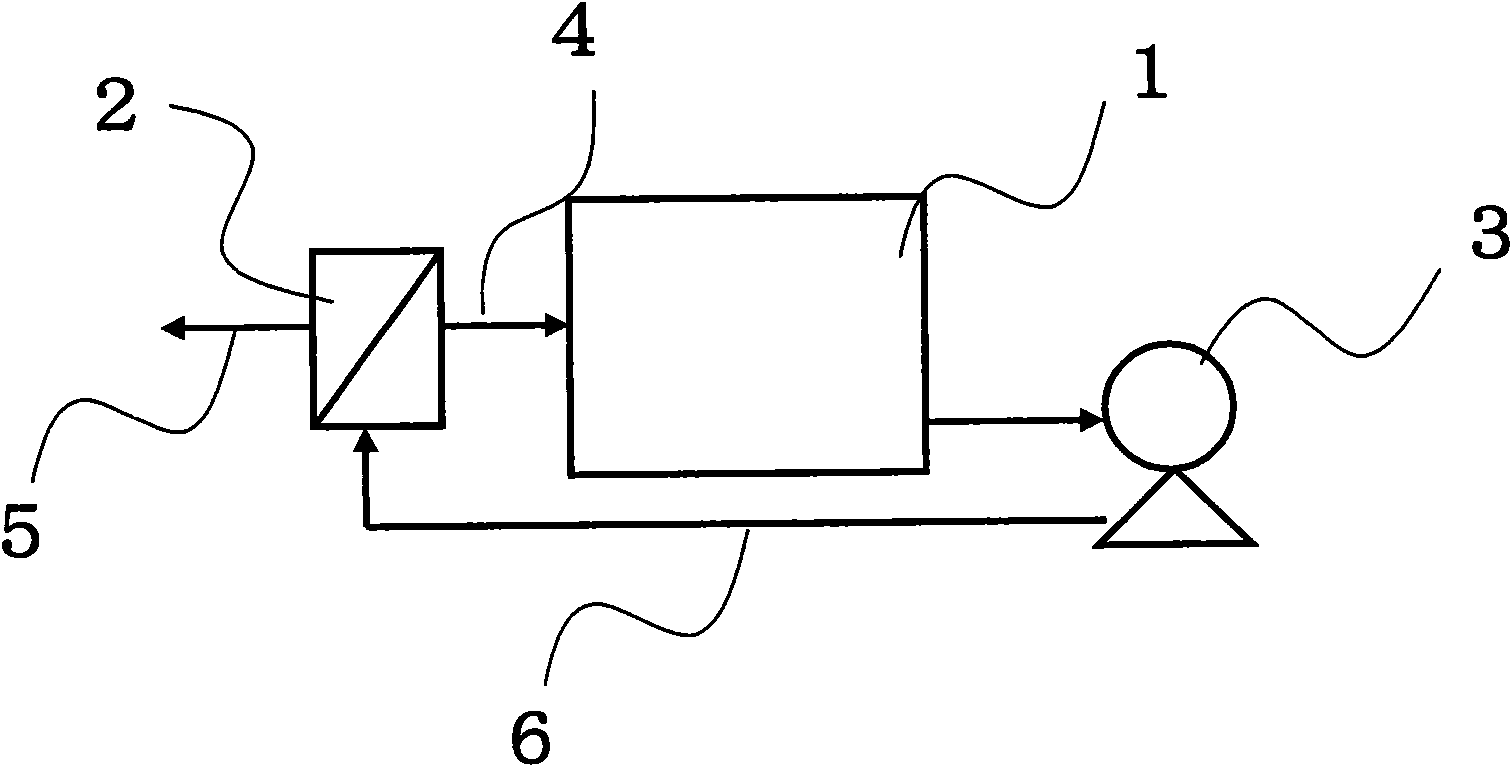Process for producing diamine and polyamide
A manufacturing method and technology of polyamide, applied in the field of polyamide manufacturing, can solve the problems of increased waste liquid treatment cost, low recovery rate of diamine, increased environmental load and the like
- Summary
- Abstract
- Description
- Claims
- Application Information
AI Technical Summary
Problems solved by technology
Method used
Image
Examples
Embodiment 1~12
[0084] (Preparation of 1,4-butanediamine sulfate aqueous solution separated by nanofiltration membrane)
[0085] In 10g / L 1,4-butanediamine sulfate aqueous solution (50L), add 1M calcium hydroxide aqueous solution (manufactured by Wako Pure Chemical Industries Co., Ltd.) to pH 9, 10, 11, and then at 25 Stir at °C for 1 hour. The precipitated calcium sulfate was filtered off by suction filtration with No. 2 qualitative filter paper (manufactured by Advantec), and 50 L of filtrate was recovered.
[0086] (Separation experiment using nanofiltration membrane)
[0087] Then, like figure 1 As shown, 50L of the filtrate obtained above is injected into the raw water tank 1 of the membrane filtration device, and when passing through the nanofiltration membrane, the pressure of the high-pressure pump 3 is adjusted to 1 MPa, and the permeated water 5 is recovered. Analyze the concentration of sulfate ions and calcium ions in raw water tank 1 and permeate water 5 with ion chromatography (manuf...
Embodiment 13~24
[0091] (Preparation of 1,5-pentanediamine sulfate aqueous solution separated by nanofiltration membrane)
[0092] In 10g / L 1,5-pentanediamine sulfate aqueous solution (50L), add 1M calcium hydroxide aqueous solution (manufactured by Wako Pure Chemical Industries Co., Ltd.) to pH 9, 10, 11, and then at 25 Stir at °C for 1 hour. The precipitated calcium sulfate was filtered off by suction filtration with No. 2 qualitative filter paper (manufactured by Advantec), and 50 L of filtrate was recovered.
[0093] (Separation experiment using nanofiltration membrane)
[0094] Then, like figure 1 As shown, 50L of the filtrate obtained above is injected into the raw water tank 1 of the membrane filtration device, and when passing through the nanofiltration membrane, the pressure of the high-pressure pump 3 is adjusted to 1 MPa, and the permeated water 5 is recovered. Analyze the concentration of sulfate ions and calcium ions in raw water tank 1 and permeate water 5 with ion chromatography (man...
Embodiment 25~36
[0098] (Preparation of 1,6-hexanediamine sulfate aqueous solution separated by nanofiltration membrane)
[0099] To 10g / L 1,6-hexamethylenediamine sulfate aqueous solution (50L), 1M calcium hydroxide aqueous solution was added to pH 9, 10, 11 respectively, and then stirred at 25°C for 1 hour. The precipitated calcium sulfate was filtered off by suction filtration with No. 2 qualitative filter paper (manufactured by Advantec), and 50 L of filtrate was recovered.
[0100] (Separation experiment using nanofiltration membrane)
[0101] Then, like figure 1 As shown, 50L of the filtrate obtained above is injected into the raw water tank 1 of the membrane filtration device, and when passing through the nanofiltration membrane, the pressure of the high-pressure pump 3 is adjusted to 1 MPa, and the permeated water 5 is recovered. Analyze the concentration of sulfate ions and calcium ions in raw water tank 1 and permeate water 5 with ion chromatography (manufactured by DIONEX), and analyze ra...
PUM
 Login to View More
Login to View More Abstract
Description
Claims
Application Information
 Login to View More
Login to View More - R&D
- Intellectual Property
- Life Sciences
- Materials
- Tech Scout
- Unparalleled Data Quality
- Higher Quality Content
- 60% Fewer Hallucinations
Browse by: Latest US Patents, China's latest patents, Technical Efficacy Thesaurus, Application Domain, Technology Topic, Popular Technical Reports.
© 2025 PatSnap. All rights reserved.Legal|Privacy policy|Modern Slavery Act Transparency Statement|Sitemap|About US| Contact US: help@patsnap.com



